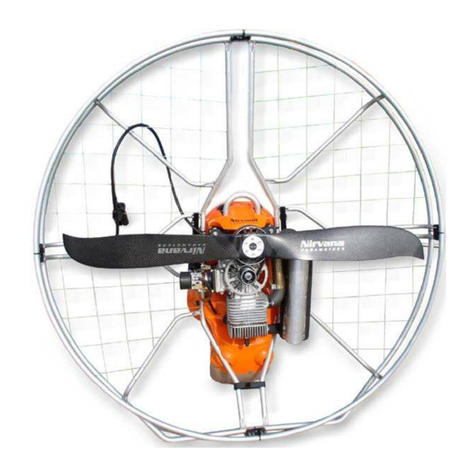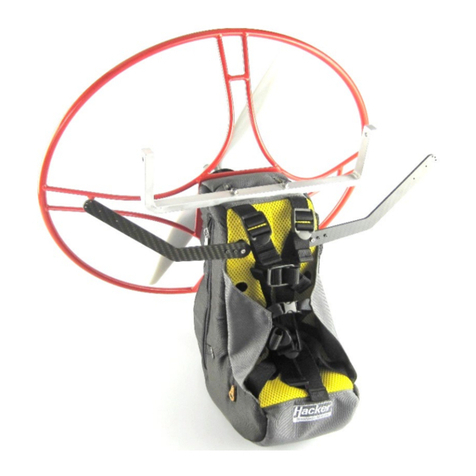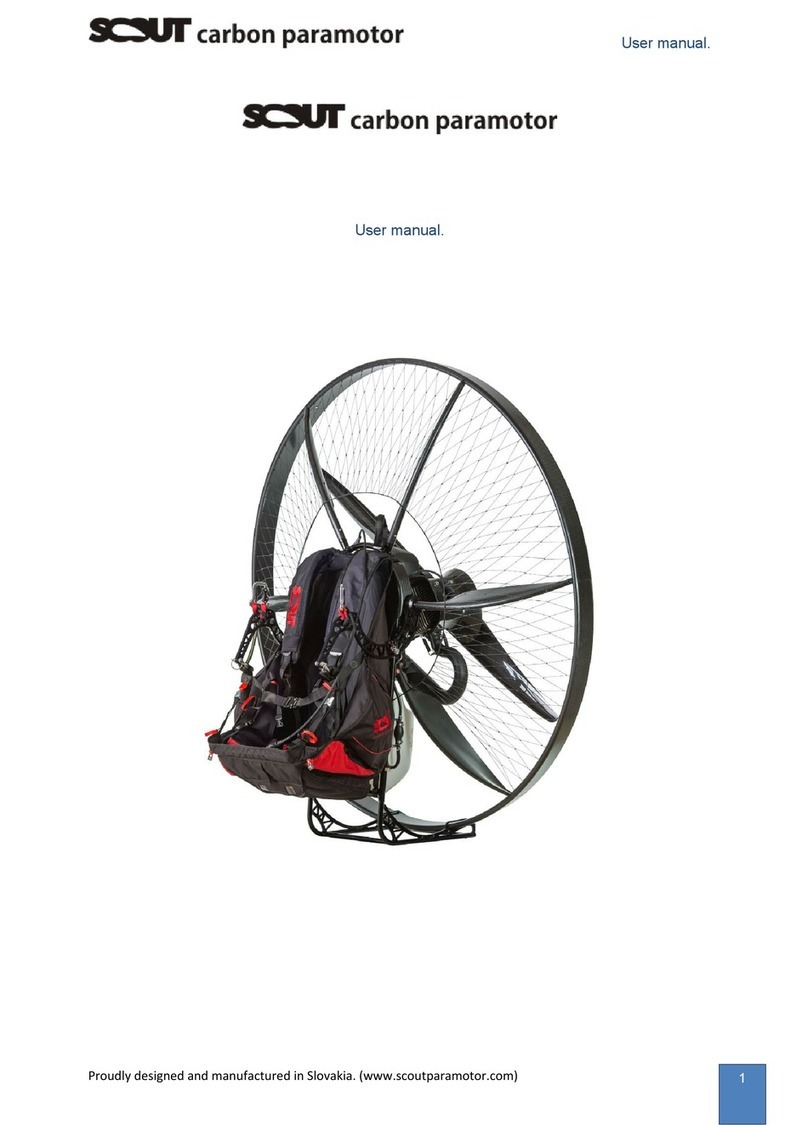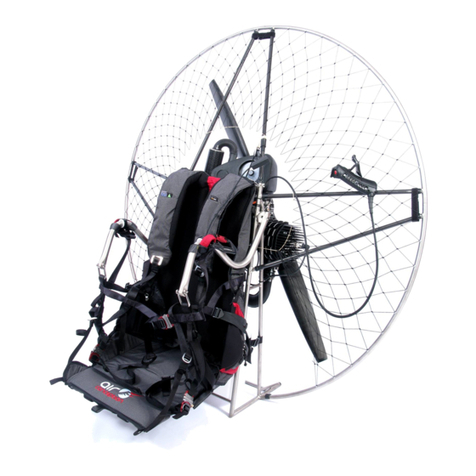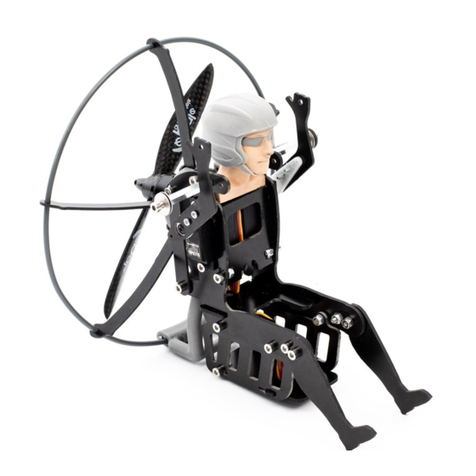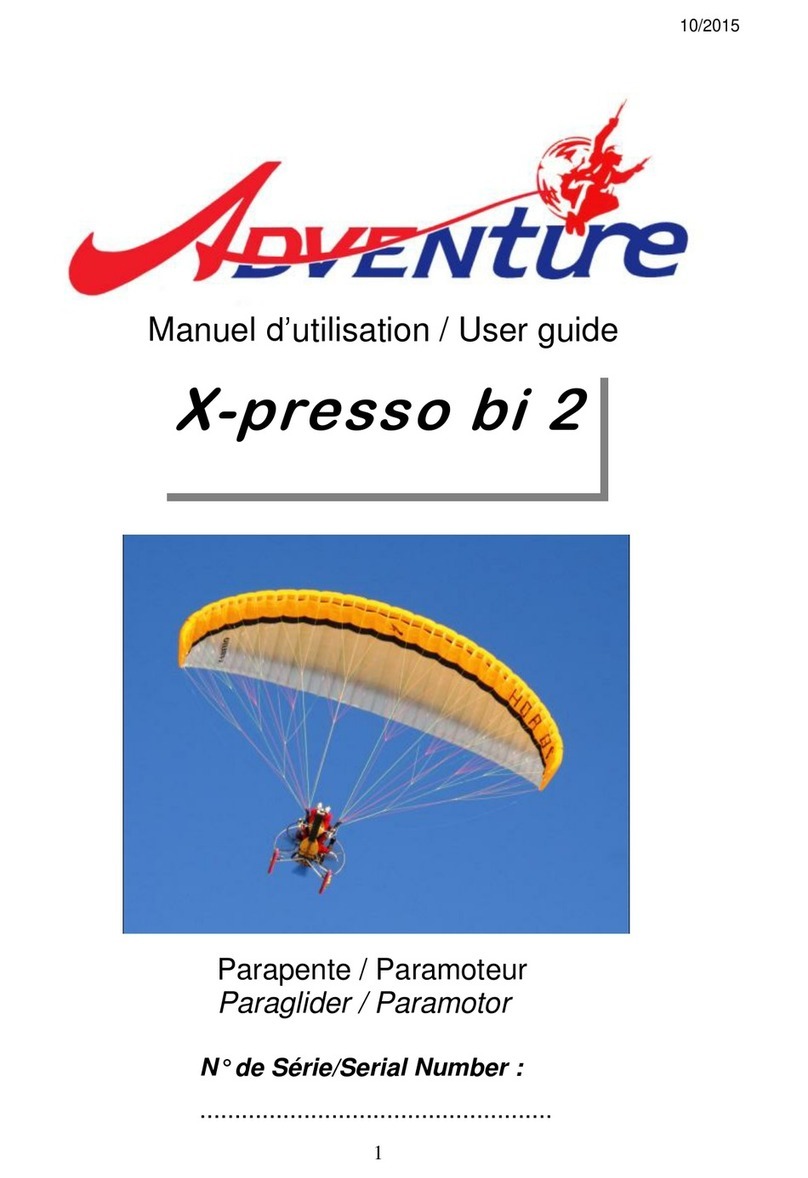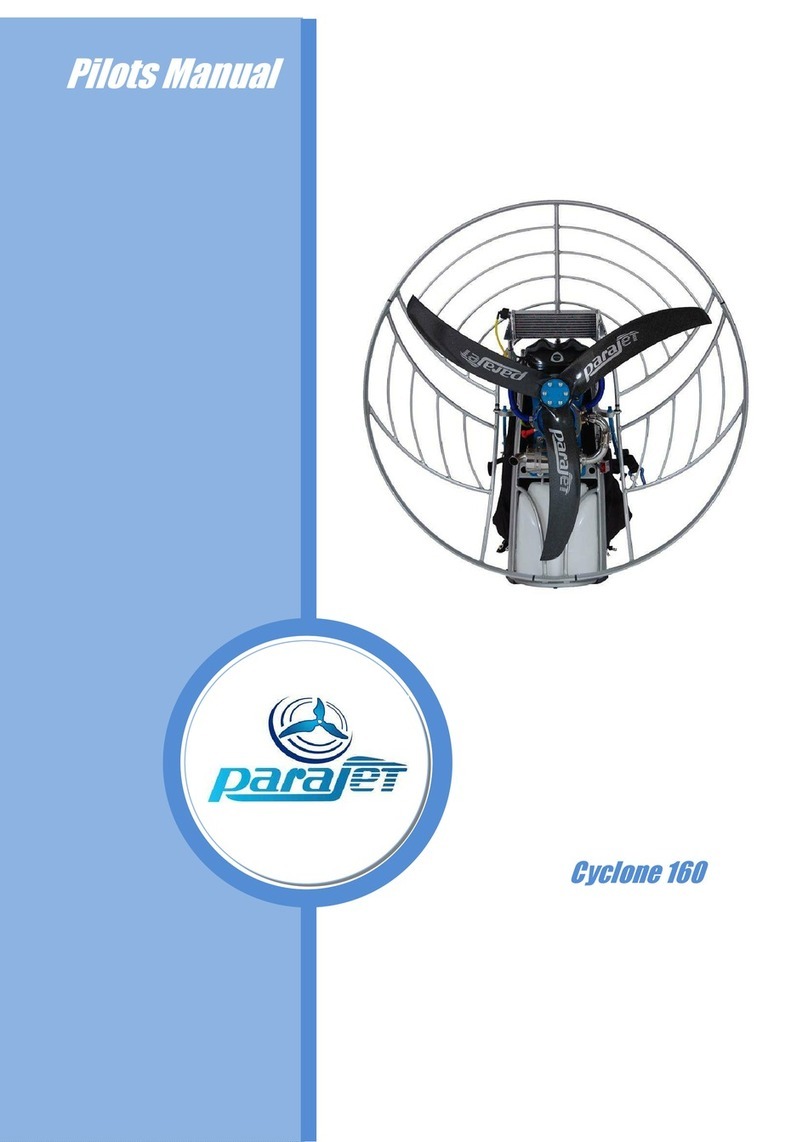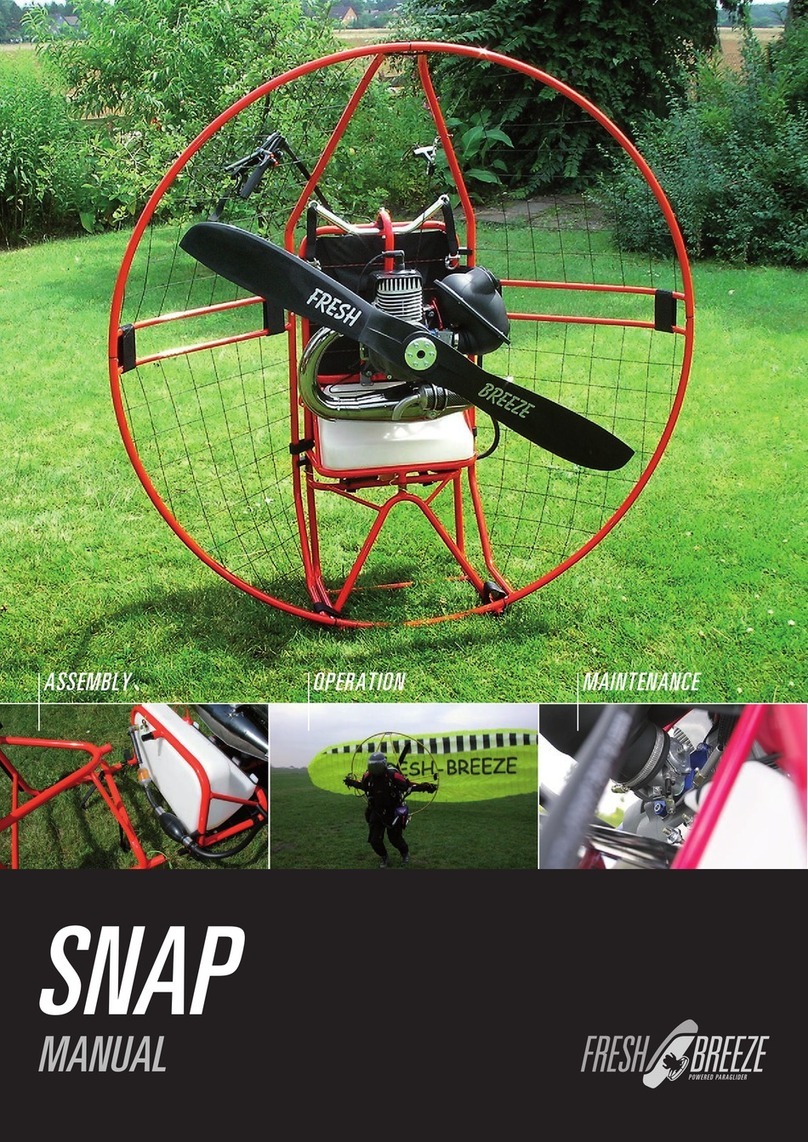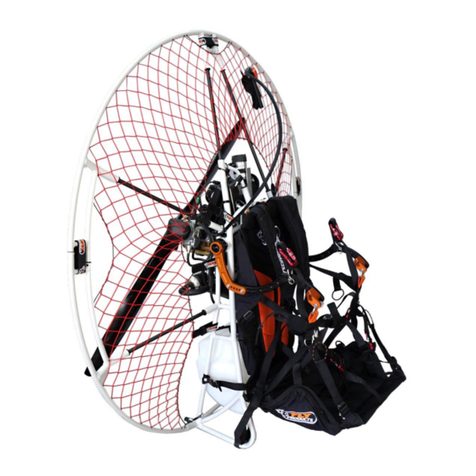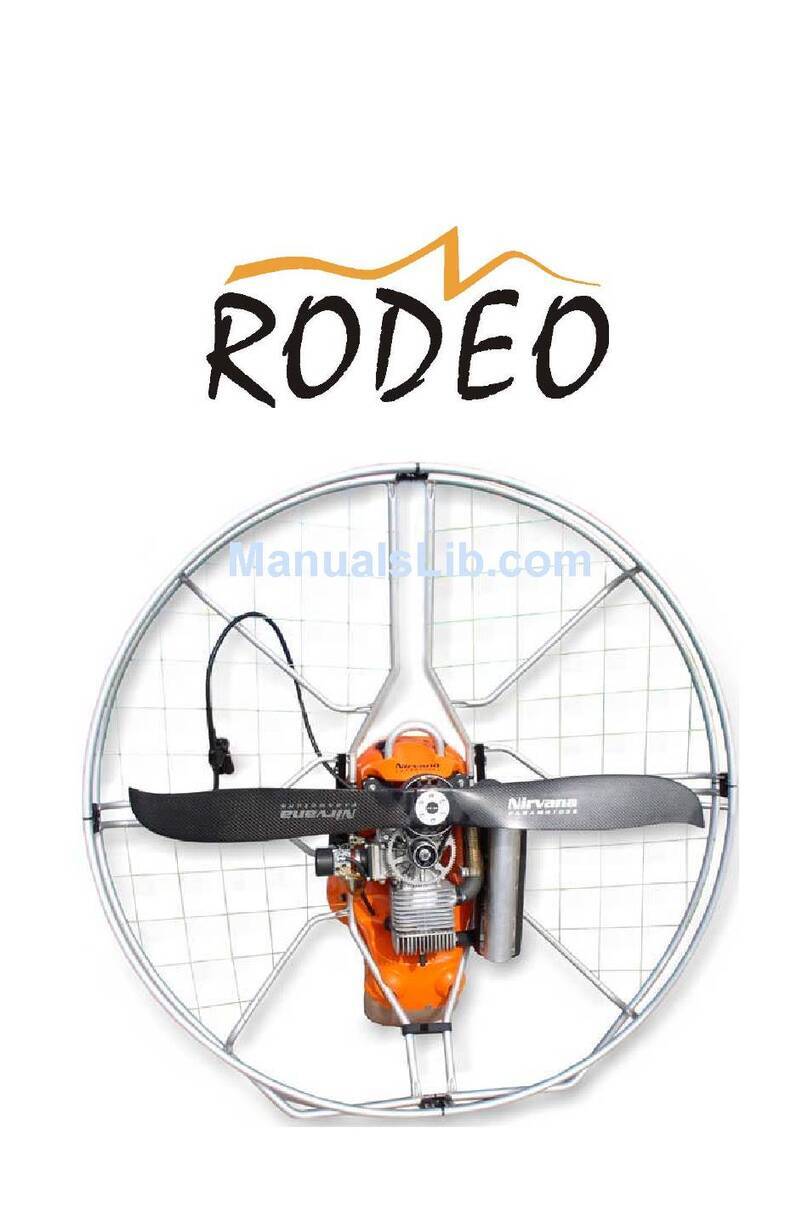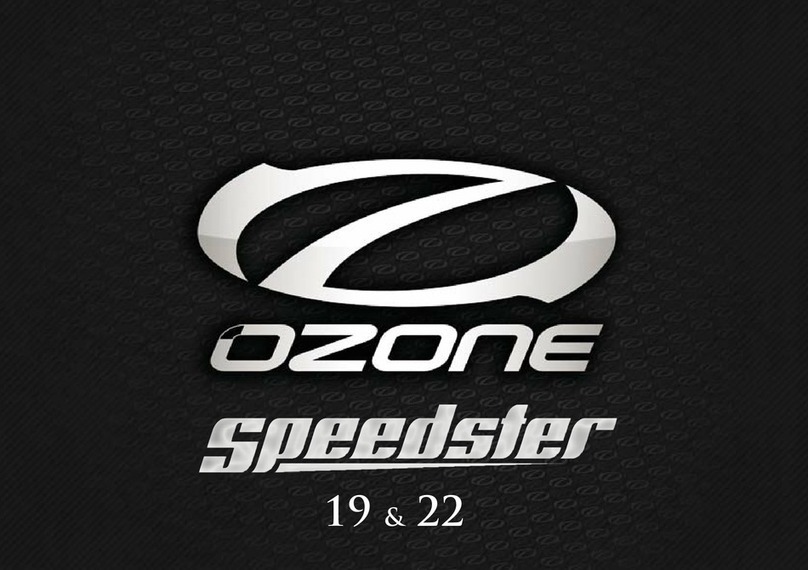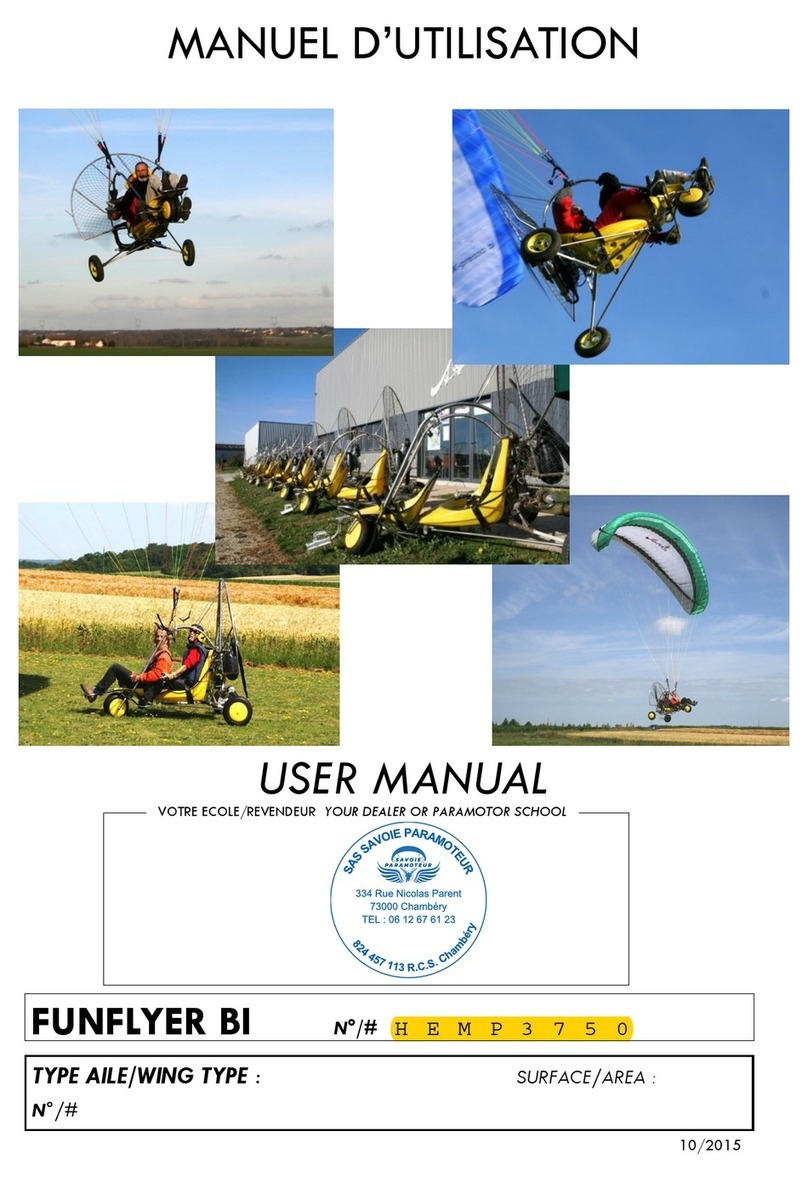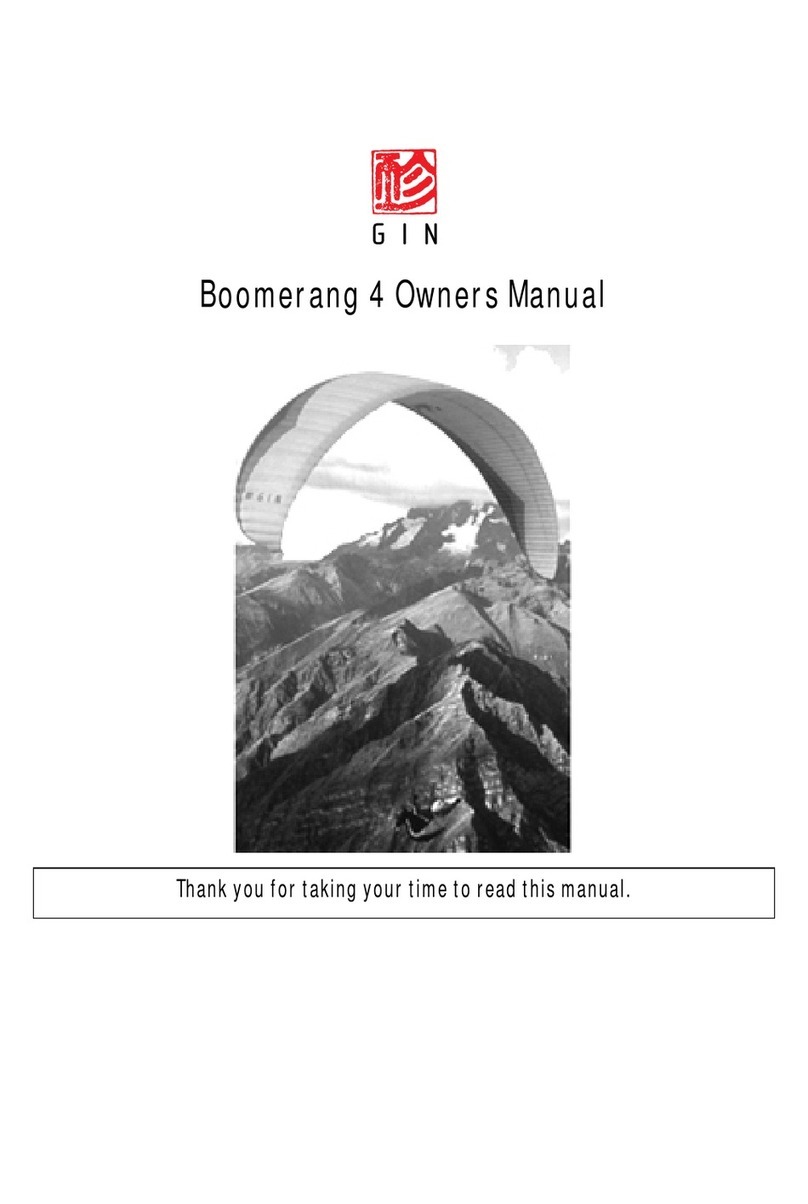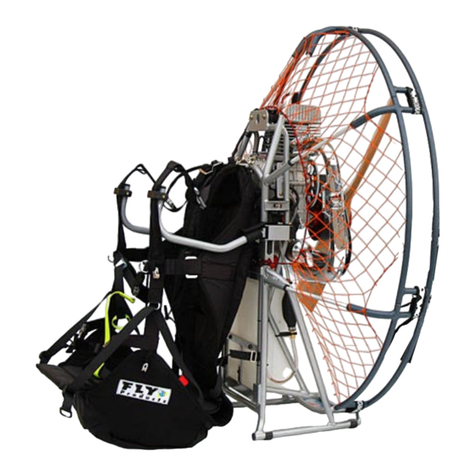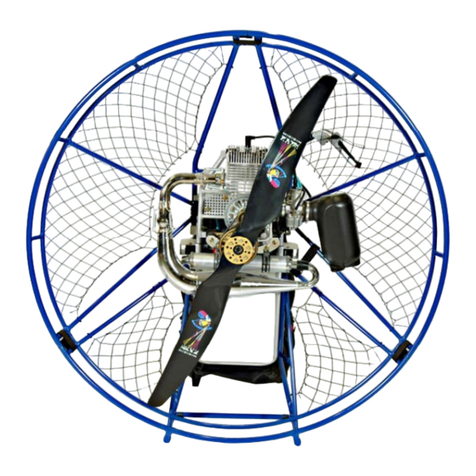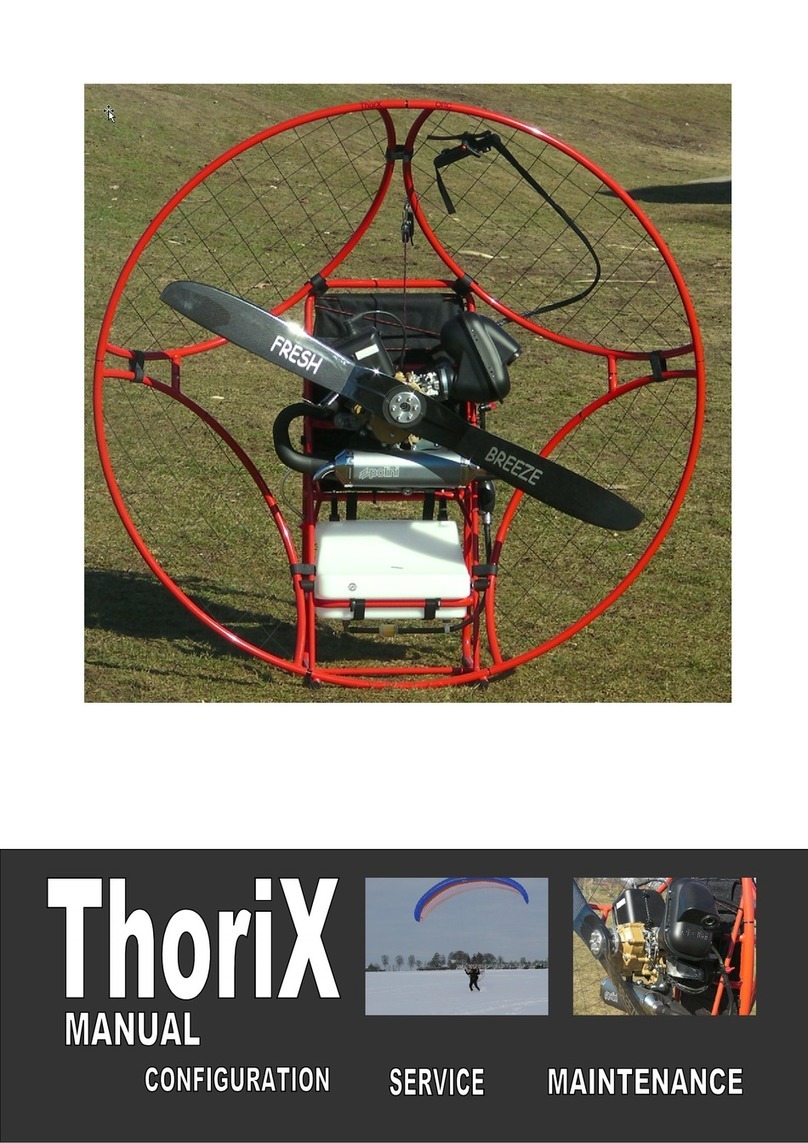
IMPORTANT
Do not perform high
G spiral dives when
ying above the
maximum EN weight
range or when ying
with a trike or a high
hang point harness
08
Load test and wing loading information for PPG wings
Toverifythestructuralstrengthof a paraglider or paramotor wing, the larger sizesofeachmodelare
subjectedtotheEN926.1loadtest.Thistestiscomprisedoftwoparts;astaticshocktest,andasustained
loadtest. First,usingat leasta1000kgweak link(higherfor tandems)thewingmustsurvive abrutal
staticshocktestwithoutanyvisiblesignsofdamagetothelinesorsail.Thesamewingthenperforms
asustainedloadtest,inatedandpulledalongarunwaybyalargetruckuntilathreesecondaverage
valueof8Gisachievedwithoutbreaking.8GistheminimumacceptedloadfactorforENcertication,
calculatedby8xthemaximumpermittedENweight.
Inaddition toEN 926.1ourparamotorwingsarealsorecognisedbythe DGAC,an entityresponsible
forMicrolight(ULM) and lightweightpoweredaircraft(Paramotor) certicationinFrance.Using the EN
loadtestresults,theDGACaccepts5.25Gasthemaximumacceptableloadfactor.Boththe8GENand
5.25G DGAC values, along with the recommended PG (free ight) and PPG (powered) weight ranges
areindicatedinthespecicationsforyourreference.WeconsidertheDGACloadfactorlimitof5.25G
acceptablefor“normal”PPGuse-circuitying,XC,adventureying,Slalomracing,wingoversetc.Some
rapiddescentmanoeuvrestintothe“normal”denition:spiraldiveswithdescentratesof~10m/sare
consideredgenerallysafe.
However,inourtestingatOzonewehaverecordedloadsinexcessof5.25Gduringfullyengaged,nose-
downspiraldives,atallpartsoftheweightrange.Theoretically,itshouldnotbepossibletobreakawing
whilstyingatthemaximumPPGweightofthelargersizes(smallerwingsizeshaveaninherentsafety
margindue tothe factthatthesamenumber&typeoflinescarryalowermaxweight),butwhenyou
consider:
a)thenaturalweakeningoflineswithage;
b)thepotentialofaccidentallydamagedlinesduringnormaluse;
c)and thatduringaspiraldive orotheraggressiveacrobaticmanoeuvretheload isnotdistributedas
evenlyacrossthespanasitisduringaphysicaltest;
thereissignicantlylessstructuralsafetymargininwhenyingclosetothemaximumDGACweight.For
thisreason,ourrecommendationtoallPPGpilotswhenyingathighwingloadings(abovethemiddle
oftherecommended PPG weight range)isto not perform deeplyengagednose down, high-G spirals
andotheraggressiveaerobaticmanoeuvres.Doingsoposesarealriskoflinefailurewithpotentiallyfatal
consequences.
